Since January 1, the national standard Emission Standard of Air Pollutants for Printing Industry and the regulations of the Ministry of Ecology and Environment Management Measures for the Directory of Key Environmental Supervision Units have been officially implemented, putting forward new requirements for green environmental protection in the printing and packaging industry. On the one hand, implement the requirements of precise, scientific and legal pollution control, and further standardize the management of industrial pollutant discharge; On the other hand, the environmental supervision unit is required to make detailed benchmarking requirements, and each printing and packaging enterprise can combine relevant standards to manage according to its own situation.
New Standard: Put Forward Limited Requirements and Speed up the Pace of Upgrading
The Emission Standard of Air Pollutants for the Printing Industry has been implemented since January 1. There are two points that deserve the attention of printing and packaging enterprises. First, the existing enterprises will implement the emission control of air pollutants in accordance with the provisions of the new standard since July 1, 2024 and will no longer implement the relevant provisions of the Integrated Emission Standard of Air Pollutants. Second, new enterprises or new expansion and technological transformation of enterprises need to implement this standard from this year. At the same time, local governments can implement this standard in advance with the approval of the provincial people's government according to the local ecological environment protection needs and economic and technical conditions or implement local standards that are stricter than this standard on the basis of this standard. It is understood that relevant standards in Beijing, Shanghai, Jiangsu, Hebei and other places have been implemented in succession. Compared with the previous standard, the new standard has made great changes, and printing and packaging enterprises must pay enough attention to it.
The definition of VOCs materials is clarified again. The new standard requires that the VOCs used in the printing production process should account for more than or equal to 10% of the raw and auxiliary materials such as ink, diluent, fountain solution, adhesive, coating, varnish, cleaning agent, developer, fixing solution and waste (slag, liquid). From guiding enterprises to take source control as the top priority of environmental protection work, try to use low VOCs raw and auxiliary materials.
The standard value of benzene series is proposed. Benzene series include benzene, toluene, xylene, trimethylbenzene, ethylbenzene and styrene, changing the previous statistics of only toluene and xylene. Correspondingly, enterprises also need to make changes in monitoring and environmental protection tax collection.
Include particulate matter in the monitoring range, and put forward the limit requirement of 30mg/m3. The new standard requires publication printing enterprises to set up independent paper wool recovery system, and the exhaust funnel of existing production facilities should be subject to particle monitoring. The workshops of extrusion and hot melt composite processes of packaging enterprises need to collect the flue gas and set up exhaust outlets. This item also needs to be added to the exhaust funnel of VOCs treatment facilities. All enterprises should improve relevant facilities as soon as possible and carry out monitoring according to the actual situation.
Make clear requirements for the indicators of nitrogen oxide and sulfur dioxide such as the oven of rotary printing machine, the combustion equipment of VOCs treatment facilities, the combustion furnace and oven of packaging enterprises. According to the author, it is difficult for many printing and packaging enterprises to meet these two indicators, and enough time should be left for upgrading.
New Measures: Focus on Source Control, and Technology Substitution is Imminent
In the Administrative Measures for the List of Key Environmental Supervision Units issued by the Ministry of Ecology and Environment, China's key environmental supervision units mainly involve water environment, groundwater pollution prevention, atmospheric environment, noise, soil pollution, and environmental risks. Many domestic printing industry enterprises are key pollutant discharging units of atmospheric environment.
The new method clearly states that the industry that meets one of the following conditions will be listed as the key pollutant discharge unit of the atmospheric environment - "enterprises above the designated size in the packaging and printing industry, except those that all use the low volatile organic content ink that meets the national regulations". The annual monitoring cost of key units is more than 100,000 yuan higher than that of non-key units. In other words, the upgrading of water-based ink for packaging and printing enterprises is imminent.
One of the conditions for being listed as the key environmental risk control unit is to produce more than 100 tons of hazardous waste annually. At this stage, the hazardous waste production of printing enterprises is mainly concentrated in two aspects: one is the waste developer in the process of plate making, the other is the cleaning cloth in the process of printing, such as cleaning the rubber blanket. In order to significantly reduce the hazardous waste of enterprises, we need to start with the cleaning process. The traditional cleaning process mainly uses waste cloth and cloth. Due to the low purchase price, all enterprises have no relevant management measures, the environmental protection department and the production department have no connection, and the cost of hazardous waste disposal has not been included in the relevant assessment. Combining with the source control measures of other industries, replacing waste cloth strips with non-woven fabrics is an important way for printing enterprises to reduce hazardous waste. The ratio of annual use of wet cloth wiping cloth to traditional wiping cloth is 1:10, that is, the original use of 10 tons of wiping cloth is only 1 ton of wet cloth wiping cloth at this stage. It is estimated that an enterprise with 10 printing presses can reduce hazardous waste by 12 tons per year. According to the price of hazardous waste treatment of 6000 yuan per ton, the annual cost of hazardous waste treatment will be saved by about 72,000 yuan. At the same time, it also greatly reduces the production of hazardous waste.
